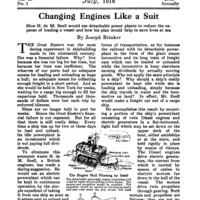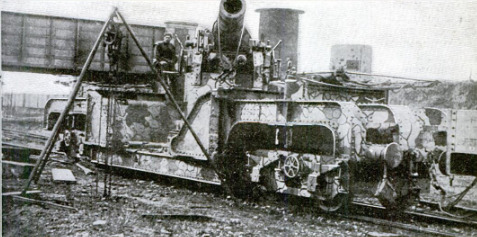Making Believe with Paint and Brush at the Front
Item
-
Title (Dublin Core)
-
Making Believe with Paint and Brush at the Front
-
Article Title and/or Image Caption (Dublin Core)
-
Making Believe with Paint and Brush at the Front
-
Caption: This big British gun is being made ready for the front with the aid of brush and paint applied by artists, who make it appear as part of the landscape
-
extracted text (Extract Text)
-
THE observer in the airplane tries in
vain to locate the enemy gun; his
eye, looking through a telescope, fails to
detect its muzzle through the foliage.
So he flies away and the gun is not
attacked.
This is an example of camouflage as
it is practiced in the European war. And
the camoufleur is so expert that his busi-
ness of fooling the enemy has become an
art.
An early use of camouflage by the
French was the application of paint to
big guns in order to make them resemble
the foliage in which they were partly
concealed. However, when the guns
had to be placed in the open the disguise
only accentuated their visibility. The
protective coloration of birds and animals
gave a hint to the camoufleurs who saw
that it disguised the outlines of these
creatures and counteracted to a consider-
able degree their undershadows. So the
high lights along the gun barrels were
darkened and their under surfaces light-
ened. The colors of the paint, of course,
harmonized with the surrounding objects.
The finishing touches to this work con-
sisted in irregular streakings and blotches
which broke the outlines and at least
confused the observer if they did not
serve to produce invisibility.
-
Language (Dublin Core)
-
eng
-
Date Issued (Dublin Core)
-
1918-07
-
pages (Bibliographic Ontology)
-
47
-
Rights (Dublin Core)
-
Public Domain (Google digitized)
-
Archived by (Dublin Core)
-
Filippo Valle
-
Alberto Bordignon (Supervisor)
 Popular Science Monthly, v. 93, n. 1, 1918
Popular Science Monthly, v. 93, n. 1, 1918



